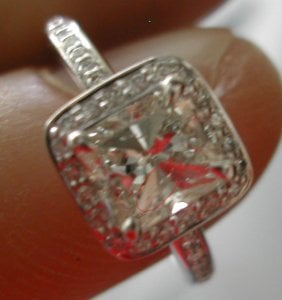I have a question regarding my engagement ring. The diamond is a G SI1. I have returned the diamond because of not being happy with it. I am not sure if you can see in the pictures because they are blurry, but there was an inclusion that looked like a crystal line to me that was easily visible to my eyes. I am in the process of getting it replaced, but am leery of the jewelers honesty.
My question is are SI1 supposed to have visible inclusions? How can one be sure that the GIA report matches the diamond you are receiving?
Thanks for your time wish I would have found you guys sooner!

My question is are SI1 supposed to have visible inclusions? How can one be sure that the GIA report matches the diamond you are receiving?
Thanks for your time wish I would have found you guys sooner!










300x240.png)